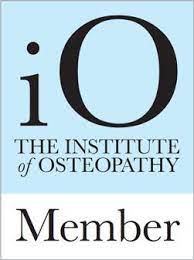Lower back pain is extremely common, with most people experiencing it at some time during in their lives. It is painful, can be worrying and is frustrating as it can stop you from doing the things that you want to do.
Fortunately, despite the pain and frustration, most lower back pain sufferers make a good recovery. Follow these seven tips to help you control and manage your back pain, get back to activity and make a full recovery.
1) Don’t panic
These symptoms are common and normally nothing serious. The lower back is strong and adaptable, and can stand up to and recover from whatever it is you’ve done. Generally stay active, don’t worry too much and expect it to get better. If things don’t improve on their own then see an osteopath to get a thorough assessment and specific treatment plan.
2) Know your back pain
Paying attention to your symptoms and what affects them can be extremely useful. Look out for things such as: Are symptoms made better or worse by walking, sitting, standing, bending or arching the back, also are they worst first thing in the morning, or do they build up through the day?
This is extremely important information as it allows you to take control of your pain and adjust your activities and manage your symptoms. Also if the back pain does not clear up and you decide to see a professional this information will help them to make an accurate diagnosis and treatment plan.
3) Keep moving
Staying physically active is important as it helps you maintain your movement abilities and increases your healing and recovery.
Knowing the things that improve / worsen symptoms (see above) will enable you to adjust activities most effectively. You may need to initially avoid or limit the aggravating factors, using the relieving factors to allow you to modulate and control your symptoms and maintain your activity levels.
4) Use cold
If you have recently “pulled” your back and it’s feeling sore and a bit inflamed the cold therapy can be useful way to reduce pain and ease the inflammation, especially in the first two or three days following injury.
Using a thin towel or cloth between your skin and the ice, apply for Approximately 20 minutes, and make sure you’re putting the ice on your body rather than your body on the ice as lying with your weight on the ice pack can aggravate the area, allow two hours between applications.
5) Or use heat
Whereas ice is good for recent acute onset of pain, the longer pain has been there, or the more tight and stiff (rather than sore and inflamed) it feels then heat will become more beneficial.
Heat increases blood and oxygen flow to aid healing, eases pain and relaxes tight muscles. Similar guideline apply as with ice; use a cloth or tea towel between the heat (usually a heat pack or hot water bottle) and your skin, apply for twenty minutes at a time and leave two hours between applications, and put the heat onto your body rather than the other way around.
6) Think twice before asking for X-rays or MRI’s
When you are suffering with pain it is normal to think that an X-ray or MRI might help find the cause. However research shows that there is a poor correlation between what is seen on scans and what is actually causing the symptoms.
Many people who are completely symptom free have disc bulges and degenerative changes in their lumbar spine. Discovering these through imaging in many cases leads to distress and fear. Research suggests that early imaging for lower back pain can lead to increased fear and reduced movement, slowing down recovery.
Imaging can be useful in rare cases of pathology, advanced symptoms and especially where surgery is being considered, otherwise it is better not to pursue imaging unless it’s really necessary, ie: you are strongly recommended to do so by a medical professional.
7) See a professional if symptoms persist
In many case of lower back pain you can recover fully through a balance of rest, exercises and a little bit of time. However, lower back pain comes in many different forms and can have many causes. If your pain isn’t improving and/ or you don’t regain full movement then book an appointment with an Osteopath. They will be able to assess and find out what’s causing symptoms as well as predisposing and maintaining factors, and develop a specific treatment and exercise plan to get you back to your best and help you to stay pain free.
Holland Park Osteopathic Practice provides effective lower back pain treatment to Holland Park and the surrounding areas. Easily accessible from Notting Hill Shepherds Bush, Kensington and Ladbroke Grove.










